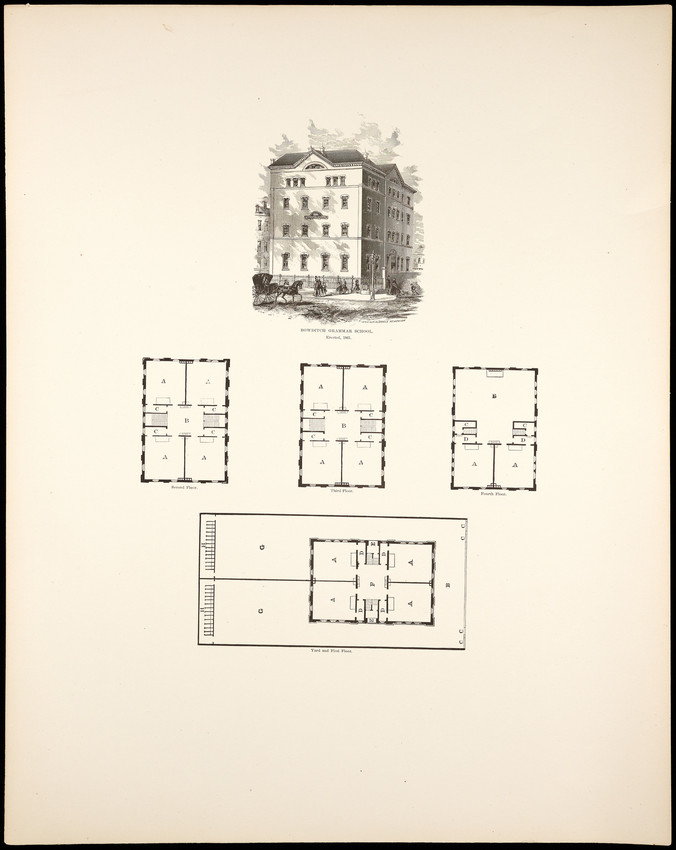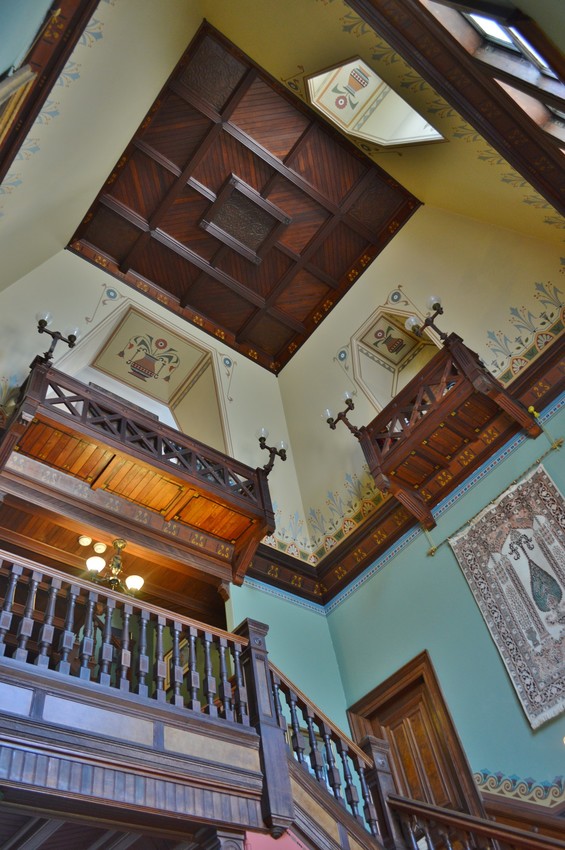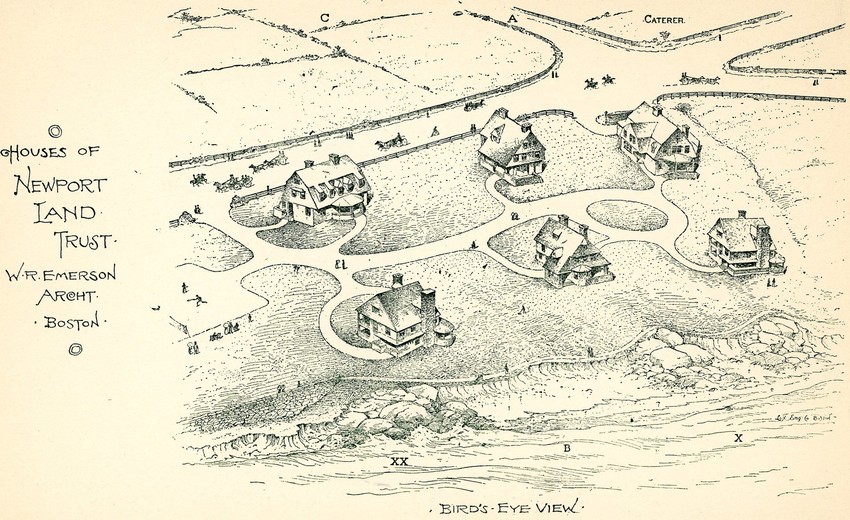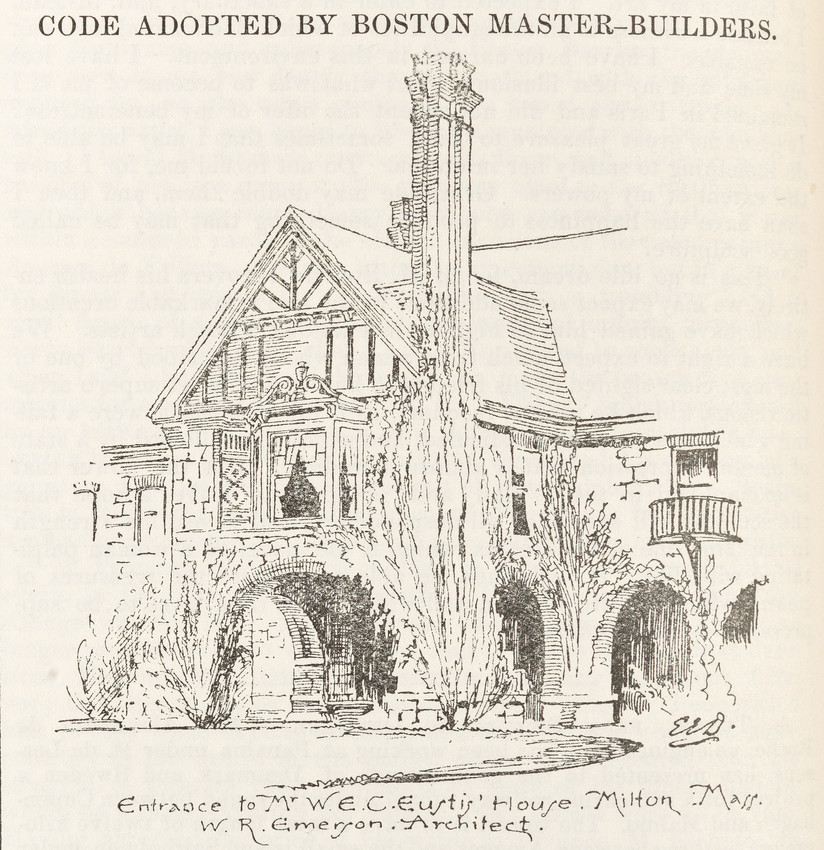 Eustis Estate
Eustis Estate
William Ralph Emerson Architectural Database > Public Persona
W. Ralph Emerson in the Public Eye
“Among those who have acquired a national reputation for his great skill and artistic conceptions as an architect is Mr. William Ralph Emerson, whose surname is becoming in architecture a reminder of Ralph Waldo Emerson’s name in literature and philosophy.”
Illustrated Boston: The Metropolis of New England, 1889
From an early point in his career, William Ralph Emerson developed a reputation as a talented and innovative architect. Through newspaper and magazine articles, exhibitions, and books, Emerson’s designs and skills attracted notoriety. Articles drew attention to his abilities and new buildings, like the Bowditch School in Boston, were the subjects of extensive newspaper reviews. Describing the new school and its dedicatory ceremonies in January 1862, The Boston Evening Transcript described Emerson as “a young architect of taste and skill.”

Throughout his professional life, W. Ralph Emerson’s work interested writers and journalists eager to describe for their readers new construction projects or recently erected buildings. As it neared completion in 1870, Boston newspapers were proud to discuss the Newport summer residence of Milton Sanford, designed by Emerson & Fehmer: “It… has several peculiar features, chief of which is the entrance hall, extending the entire height of the villa, with in-looking balconies on the second and third stories, and broad stairways, which the imagination at once pictures thronged by a brilliant assemblage, looking doubly brilliant among these stained describing this enchanting place, – a task not to be undertaken in a paragraph; but I should like to make the reader’s mouth water…”

Articles like this bolstered Emerson’s public reputation, and a correspondent from Kennebunk, Maine, where Emerson spent time as a child and where his family had extensive ties, proudly counted the architect among those from the town “who have made their mark in the world.” Arriving in Bar Harbor, Maine on business, local newspapers began noting the presence of “the famous Boston architect.”
Given his prominence, Emerson’s endorsement became a valuable commodity. As early as the 1860s he endorsed wall hangings and ventilation systems, and as his shingled houses became better known, his designs were included in the advertisements of Boston’s major shingle stain manufacturers: Samuel Cabot and Dexter Brothers. Using illustrations and photographs, both companies showcased Emerson’s use of their products and written descriptions further associated Emerson with these manufacturers. “At Kennebunkport the house for Mr. Sam Jones, of Philadelphia, is almost completed,” noted one article in Building. “This is one of Mr. Wm. Ralph Emerson’s houses, and is after his peculiar style… Here Dexter’s dark brown and green stains are used, with the “ivory white” sash.” Samuel Cabot also drew on Emerson’s acclaim, and drawings of the architect’s buildings appeared in the company’s printed materials, illustrating instances where their products had been used.

Emerson understood the potential for printed media to foster his public image and often submitted drawings to professional periodicals to be used as illustrations. Sometimes magazines sent artists to create drawings of his designs and among those buildings identified and rendered for use in a periodical was the W.E.C. Eustis House in Milton, which appeared as a small vignette in The American Architect and Building News in 1886. Over the 1870s, 1880s, and 1890s, dozens of Emerson buildings appeared in professional and popular publications in both the United States and abroad. Sometimes these depicted designs that were unrealized or heavily changed over the course of the construction, but editors understood the widespread interest in Emerson as an architect.


W. Ralph Emerson was also a frequent contributor to architectural exhibitions. Four of his drawings were included in an 1879 exhibition organized by the Boston Society of Architects and the Boston Art Club, including his competition entry for the Milton Town Hall.

Reviews of these shows often included descriptions of Emerson’s entries and demonstrate interest in his work. Describing an 1886 exhibit in New York City, one article noted that entry “No. 226 by Mr. W.R. Emerson of Boston [is] a study of a rambling red house, almost buried in summer foliage, which to our mind is, without exception, the most beautiful piece of work in the whole collection.” Occasionally Emerson’s submissions were reprinted in exhibition catalogues such as his Casino, from the 1886 exhibit of the Boston Society of Architects, and his Design for a House at Cincinnati, exhibited in 1897 in Boston and in 1900 in Detroit.


Newspapers, magazines, exhibitions, and books fostered Emerson’s public persona and reputation. He was known for his designs and his drawing style, and he was often presented as one of America’s preeminent architects. In his book Triumphs and Wonders of the XIXth Century, James Penny Boyd described Emerson’s architectural work alongside of some of the major figures of the nineteenth century. After discussing Richard Morris Hunt, architect of the Biltmore in North Carolina and the base of the Statue of Liberty, and McKim, Mead & White, architects of the Newport Casino and the Boston Public Library, Boyd noted the role of W. Ralph Emerson: “There is another architect whose talents should be acknowledged; for about 1880, when the shingle house had just begun to take shape, there was none more clever at that sort of thing than W.R. Emerson, of Boston, and his resources seemed endless in harmonizing form and color with conditions of seashore or mountain, as shown in his houses at Bar Harbor, Milton, Newport, and many other summer resorts.”